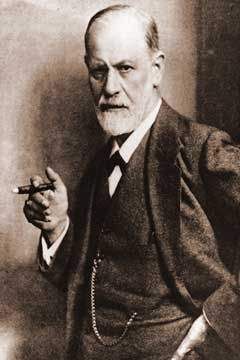Piaget, J. (1936). The origins of intelligence in children. New York: Norton, 1963.
Piaget, J. (1937). The construction of reality in the child. New York: Basic Books, 1954.
Piaget, J. (1946). Play, dreams and imitation in childhood. New York: Norton, 1962.
Piaget, J. (1952). The child's conception of number. New York: Humanities.
Piaget, J. (1954). Intelligence and affectivity: Their relationship during child development. Palo Alto, Calif.: Annual Reviews, 1981.
Piaget, J. (1958). Equilibration processes in the psychobiological development of the child. In The essential Piaget, ed. H. E. Gruber and J.J. Voneche. New York: Basic Books, 1977, pp. 832-841.
Piaget, J. (1964). Six psychological studies. New York: Random House, 1967.
Piaget, J. (1967). Biology and knowledge. Chicago: Univ. of Chicago Press. 1972.
Piaget, J., and Inhelder, B. (1969). The psychology of the child. New York: Basic Books.
Piers, G., and Singer, M. B. (1953). Shame and guilt. Springfield.
Thomas. Pine, F. (1971). On the separation process: Universal trends and individual differences. In Separation — individuation: Essays in honor of Margaret S. Mahler, ed. J. B. McDevitt and C. Settlage. New York: Int. Univ. Press, pp. 113-130.
Pine, F. (1974). Libidinal object constancy: A theoretical note. Psychoanal. Contemp. Science, 3:307-313.
Pine, F. (1985). Developmental theory and clinical process. New Haven: Yale Univ. Press.
Plant, E. A. (1979). Play and adaptation. Psychoanal. StudyChild, 34:217-234.
Plant, E. A., and Hutchinson, F. (1986). The role of puberty in female psycho-sexual development. Int. Rev. Psychoanal., 13:417-432.
Pollock, G. H. (1981). Aging and aged: Development on pathology. In The course of life. Vol. 3, ed. S. 1.
Greenspan and G. H. Pollock. Publication No. (ADM) 81-1000. Washington, D. C.: DHHS, pp. 549-581. Prechtl, H. F. R. (1982). Assessment methods for the newborn infant: A critical evaluation. In Psychobiology of the human newborn, ed. P. Stratton. New York: Wiley, pp. 21-52.
Provence, S., and Lipton, R. C. (1962). Infants in institutions. New York: Int. Univ. Press.
Pruett, K. D. (1983). Infants of primary nurturing fathers. Psychoanal. Study Child, 38:258-280.
Pruett, K. D. (1984). Children of the father-mothers. In Frontiers of infant psychiatry. Vol. 2, ed. J. D. Call, E. Galenson, and R. L. Tyson. New York: Basic Books, pp. 375-380.
Pruett, K. D. (1985). Oedipal configurations in young father-raised children. Psychoanal. Study Child, 40:435-456.
Pruett, K, D. (1987). Nurturingfather.-Journeytowardtheconpleteman. New York: Warner.
Pulver, S. E. (1970). Narcissism: The term and the concept. Amer. Psychoanal. Assn., 18:319-341.
Pulver, S. E. (1974). Unconscious versus potential affects. Psychoanal. Q., 43:77-84.
Rakic, P., and Yakovicv, P. 1. (1968). Development of the corpus callosurn and cavum septi in man.y. Сотр. Neural., 132:45-72.
Rangell, L. (1963). Structural problems in intrapsychic conflict. Psychoanal. Study Child, 18:103-138.
Rangell, L. (1968), A further attempt to resolve the «problem ofanxiety.» Amer. Psychoanal. Assn., 16:371-404.
Rangell, L. (1972). Aggression, Oedipus, and historical perspective. Int. J. Psychoanal., 53:3-11.
Rangell, L. (1974). A psychoanalytic perspective leading currently to the syndrome of the compromise of integrity. Int. J. Psychoanal., 55:3-12.
Rangell, L. (1980). The mind of Watergate: An exploration of the compromise of integnty. New York: Norton.
Rangell, L. (1982). The self in psychoanalytic theory. Amer. Psychoanal. Assn., 30:863-891.
Rapaport, D. (1951). Toward a theory of thinking. In Organization and pathology of thought, ed. D. Rapaport. New York: Columbia Univ. Press, pp. 689-730.
Rapaport, D. (1953). On the psycho-analytic theory of affects. In The collected papers of David Rapaport, ed. M. M. Gill. New York: Basic Books, 1967, pp. 476-512.
Rapaport, D. (1960). Psychoanalysis as a developmental psychology. In The collected papers of David Rapaport, ed. M. M. Gill. New York: Basic Books, 1967, pp. 820-852.
Rapaport, D., and Gill, M. M. (1959). The points of view and assumptions of metapsychology. In The collected papers of David Rapaport, ed. M. M. Gill. New York: Basic Books, 1967, pp. 795-811.
Reeves, J. W. (1965). Thinking about thinking. New York: George Braziller. Reich, A. (1953). Narcissistic object choice in women. I. Amer. Psychoanal. Assn., 1:22-44.
Reich, A. (1954). Early identifications as archaic elements in the superego. Amer. Psychoanal. Assn., 2:218-238.
Reich, A. (1958). A character formation representing the integration of unusual conflict solutions into the ego structure. Psychoanal. Study Child, 13:309-323.
Reich, A. (1960), Pathologic forms of self — esteem regulation. Psychoanal. Stud. Child, 15:215-232.
Renik, O. (1972). Cognitive ego function in the phobic symptom. Psychoanal. Q., 41:537-555.
Rheingold, H. L. (1969). The social and socializing infant. In Handbook of socialization theory and research, ed. D. Goslin. Chicago: Rand McNally, pp. 779-790.
Riess, A. (1978). The mother's eye: For better and for worse. Psychoanal. Study. Child, 33:381-409.
Ritvo, S. (1974). Current status of the concept of infantile neurosis. Psychoanal. Study Child, 29:159-188.
Ritvo, S. (1976). Adolescent to woman. Amer. Psychoanal. Assn., 24: 127-138.
Ritvo, S. (1981). Anxiety, symptom formation and ego autonomy. Psychoanal. Study Child, 36:339-364.
Ritvo, S., and Solnit, A.J. (1960). The relationship of early ego identification to superego formation. Int. J. Psychoanal., 41:295-300.
Roiphe, H., and Galenson, E. (1981). Infantile origins of sexual identity. New York: Int. Univ. Press.
Rosenblatt, A. D. ( 1985). The role of affect in cognitive psychology and psychoanalysis. Psychoanal. Psychot., 2:85-97.
Rosenblatt, A. D., and Thickstun.J. T. (1977). Modern psychoanalytic concepts ofgeneral psychology; Part 2: Motivation. Psychological Issues, Monograph 42/43. New York: Int. Univ. Press.
Rosner, H. (1972). «Of music, magic, and mystery»: Studies in adolescentsynthesis. Amer. Psychoanal. Assn., 20:395-416.
Ross, J. M. (1975). The development of paternal identity: A critical review of the literature on nurturance and generativity in boys and men. Amer. Psychoanal. Assn., 23:783-818.
Ross, J. M. (1982a). From other to father: The boy's search for a generative identity and the oedipal era. In Father and child: Developmental and clinical perspectives, ed. S. H. Cath, A. R. Gurwitt, andJ. M. Ross. Boston: Little, Brown, pp. 198-203.
Ross, J. M. (1982b). Oedipus revisited: Laius and the «Laius Complex.» Psychoanal. Study Child, 37:169-200.
Rothstein, A. (1980). The narcissistic pursuit of perfection. New York: Int. Univ. Press.
Rothstein, A. (1983). The structural hypothesis: An evolutionary perspective. New York: Int. Univ. Press.
Rothstein, A. (1988). The representational world as a substructure of the ego. J. Amcr. Psychoanal. Assn., 36:191-208.
Ryeroft, C. (1956). Symbolism and its relationship to the primary and secondary process. Int. J. Psychoanal., 37:137-146.
Ryeroft, C. (1968). Imagination and reality: Psycho-analytical essays, 1951 — 1961. London: Hogarth.
Sachs, H. (1929). One motive factor in formation of super-ego in women. Int. J. Psychoanal., 10:39-50.
Sander, L. W. (1962). Issues in early mother-child interaction. J. Amer. Acad. Child Psychiat., 1:141-166.
Sander, L. W. (1964). Adaptive relationships in early mother-child interaction. J. Amer. Acad. Child Psychiat., 3:231-164.
Sander, L. W. (1969). Regulation and organization in the early infant-caretaker system. In Brain and early behavior, ed. R. Robinson. London: Academic Press, pp. 311-332.
Sander, L. W. (1975). Infant and carctaking environment: Investigation and conceptualization of adaptive behavior in a system of increasing complexity. In Explorations in child psychiatry, ed. E. J. Anthony. New York: Plenum, pp. 129-166.
Sander, L. W. (1980). Investigation of the infant and its caretaking environment as a biological system. In The course of life. Vol. I, ed. S. 1. Greenspan and G. H. Pollock. Publication No. (ADM) 80-786. Washington, D.C.: DHHS.pp. 177-201.
Sander, L. W. (1983). Polarity, paradox, and the organizing process in development. In Frontiers of infant psychiatry, ed. J. D. Call, E. Galenson, and R. L. Tyson. New York: Basic Books, pp. 333-346.
Sander, L. W.; Stechler, G.; Burns, P.; andJulia, H. (1970). Early mother-infantinteraction and 24-hour patterns of activity and sleep. Amcr. Acad. Child Psychiat., 9:103-123.
Sander, L. W.; Stechler, G.; Burns, Р.; and Lee, A. (1979). Change in infant and caregiver variables over the first two months of life: Integration of action in early development. In Origins of the infant's social responsiveness, ed. E. Thoman. Hilisdale, N. J.: Eribaum, pp. 21-28.
Sandier, A.-M. (1975). Comments on the significance of Piaget's work for psychoanalysis. Int. Rev. Psychoanal., 2:365-378.
Sandier, A.-M. (1977). Beyond eight — month anxiety, Int.]. Psychoanal., 58:195-208.
Sandier, J. (196Qa). On the concept of the superego. Psychoanal. Study Child, 15:128-162.
Sandier, J. (1960b). The background of safety. Int.]. Psychoanal., 41:352-356.
Sandier, J. (1974). Psychological conflict and the structural model: Some clinical and theoretical implications. Int.]. Psychoanal., 55:53-72.
Sandier, J. (1981). Character traits and object relationships. Psychoanal. Q., 50:694-708.
Sandier, J. (1983). Reflections on some relations between psychoanalytic concepts and psychoanalytic practice, Int. J. Psychoanal., 64:35-45.
Sandier, J. (1985). Towards a reconsideration of the psychoanalytic theory ofmotivation. Bull. Anna Freud Centre, 8:223-244.
Sandier, J. ( 1987). The concept of projective identification. In Projection, identification, projection identification, ed. J. Sandier. Madison, Conn.: Int. Univ. Press, pp. 13-26.
Sandier, J., and Dare, C. (1970). The psychoanalytic concept of oralityty. Psychosom. Res., 14:211-222.
Sandier, J.; Dare, C.; and Holder, A. (1972). Frames of reference: The historical context and phases in the development of psychoanalysis. Brit. j. Med. Psychol., 45:133-142.
Sandier, J., and Freud, A. (1985). The analysis of defense: The ego and the mechanisms of defense revisited. New York: Int. Univ. Press.
Sandier, J.; Holder, A.; and Meers, D. (1963). The ego ideal and the ideal self. Psychoanal. Study Child, 18:139-158.
Sandier, J., and Joffe, W. G. (1969). Towards a basic psycho-analytic model. Int. J. Psychoanal., 50:79-90.
Sandier, J., and Rosenblatt, B. (1962). The concept of the representational world. Psychoanal. Study Child, 17:128-145.
Sandier, J., and Sandier, A.-M. (1978). On the development of object relationships and affects, Int. J. Psychoanal., 59:285-296.
Sarnoff, C. (1976). Latency. New York: Aronson.
Schafer, R. (1960). The loving and beloved superego in Freud's structural theory. Psychoanal. Study Child, 15:163-190.
Schafer, R. (1974). Problems in Freud's psychology of women. J. Amer. Psychoanal. Assn., 22:459-485.
Schafer, R. (1976). A new language for psychoanalysis. New Haven: Yale Univ. Press.
Scharfman, M. (1988). History of child analysis. Paper presented to workshop on the Significance of Child and Adolescent Analysis for Clinical Work with Adults. American Psychoanalytic Association, New York City, November.
Schulman, A. H., and Kaplowitz, C. (1977). Mirror — image response during the first two years of life. Developmental Psychology, 10:133-142.
Schur, M. (1960). Discussion of Dr. John Bowlby's paper. Psycho-anal. Study Child, 15:63-84.
Schur, M. (1966). The id and the regulatory principles of mental functioning. New York: Int. Univ. Press.
Schur, M. (1969). Affects and cognition, Int. J. Psychoanal., 50:647-653.
Schwartz, A. (1987). Drives, affects, behavior — and learning: Approaches to a psychobiology of emotion and to an integration of psychoanalytic and neurobiologic thought. Amer. Psychoanal. Assn., 35:467-506.
Schwartz, L. (1978). Book review: The restoration of the self. Psychoanal. Q., 47:436-443.
Segal, H. (1978). On symbolism, int.]. Psychoanal., 59:315-319.
Segal, H. (1979). Klein: Theories and techniques of the pioneer of child analysis. London: Harvester Press.
Settlage, C.F. (1971). On the libidinal aspect of early psychic development and the genesis of infantile neurosis. In Separation — individuation: Essays in honor of Margaret S. Mahler, ed. J. B. McDevitt and C. F. Settlage. New York: Int. Univ. Press, pp. 131-154.
Settlage, C. F. (1975). On the aggressive aspects of early psychic development and the genesis of the infantile neurosis. Unpublished paper.
Settlage, C. F. (1980). The psychoanalytic theory and understanding of psychic development during the second and third years of life. In Infancy and early childhood. Vol. I of The course of
life, ed. S. 1. Greenspan and G. H. Pollock. Publication No. (ADM) 80-786. Washington, D.C.: DHHS, pp. 523-539.
Settlage, C. R; Curtis, Z.; Lozoff, M.; Silberschatz, G.; and Simburg, E. (1988). Conceptualizing adult devclopment.y. Amer. Psychoanal. Assn., 36:347-370.
Settlage, C. R; Kramer, S.; Belmont, H. S.; et al. (1977). Child analysis. In Psychoanalytic education and research: The current situation and future possibilities, ed. S. Goodman. New York: Int. Univ. Press, pp. 49-102.
Shapiro, T. (1979). Clinical psycholinguistics. New York: Plenum.
Shapiro, Т., and Perry, R. (1976). Latency revisited. Psychoanal. Study Child, 31:79-105. Shengold, L. (1980). Some reflections on a case of mother — adolescent son incest. Int. J. Psychoanal., 61:461-476.
Shengold, L. (1989). Soul murder. New Haven: Yale Univ. Press.
Shereshefsky, P. M., and Yarrow, L. J. (1973). Psychological aspects of a firstpregnancy and early postnatal adaptation. New York: Raven Press.
Shopper, M. (1979). The (re)discovery of the vagina and the importance of the menstrual tampon. In Female adolescent development, ed. M. Sugar. New York: Bninner/Mazel, pp. 214-233.
Sifneos, P. (1974). A reconsideration of psychodynamic mechanisms inpsychosomatic symptom formation in view of recent clinical observations. Psychother. Psychosom., 24:151-155.
Silverman, M. A. (1971). The growth of logical thinking: Piaget's contribution to ego psychology. Psychoanal. Q., 40:317-341.
Silverman, M. A. (1981). Cognitive development and female psychology. J. Amer. Psychoanal. Assn., 29:581-605.
Slap, J. (1977). The eroding concept of intrapsychic conflict. Int. J. Psychoanal. Psychother., 6:469-477.
Slap, J. W., and Levine, R J. (1978). On hybrid concepts in psychoanalysis. Psychoanal. Q., 47:499-523.
Socarides, C. W. (1978). Homosexuality. New York: Aronson.
Solnit, A.J. (1979). Psychosexual development: Three to five years. In Basic handbook of child psychiatrj. Vol. I, ed. J. D. Noshpitz et al. New York: Basic Books, pp. 178-183.
Solnit, A. J. (1987a). A psychoanalytic view of play. Psychoanal. Study Child, 42:205-219.



